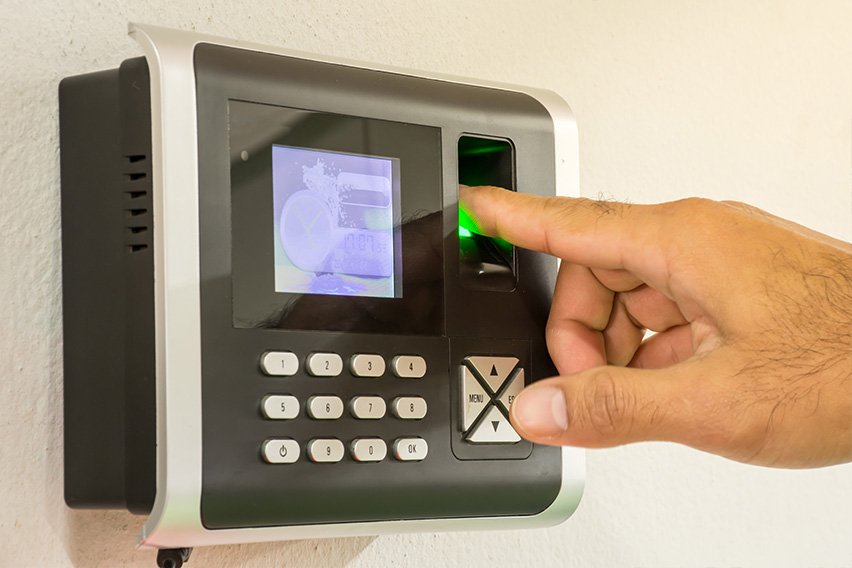16 Tips on How To Organize a Business

Creating a good organizational system is the first step to running an efficient small business. The right organizational framework makes it easy to track your projects and inventory, organize your team, and keep your finances in order.
Having a good business organization system is also important for keeping your customers and your employees happy. When you keep your small business organized, you can ensure all your orders and payments are sent on time and your schedules meet everyone’s needs.
We’ll explore 16 tips for helping you organize your physical and digital space. From creating functional storerooms to boosting your efficiency with time-tracking tools, you’ll find plenty of useful methods for creating your ideal organization system.
Key Takeaways
- Organizing your business is important for customer relationship management and workplace satisfaction.
- Software tools like accounting and time tracking can help you organize your digital space.
- Organizing your physical space is important for inventory management.
- Trying different tools will help you find the right organizational framework for your business.
Table of Contents
- Workspace Design
- Go Paperless
- Data Management
- Use Project Management Software
- Implement Time Management Strategies
- Time Tracking Tools
- Website Structure & Navigation
- Order Fulfillment Processes
- Use Inventory Management Software
- Storage Optimization
- Content Calendar Creation For Social Media
- Brand Asset Management
- Monitor And Analyze Marketing Campaigns
- Visual Merchandising Techniques
- Retail Space Layout
- Staffing
- Design an Organizational Framework that Fits Your Preferences
1. Workspace Design
Whether you operate a large office or run your business from home, having an efficient workspace is key to keeping an organized business. Ensure your workstation is comfortable and ergonomic—uncomfortable spaces can reduce productivity and decrease employee happiness. Even if a good office chair is slightly more expensive, it will pay off in the long run.
It’s also important to organize the workflow of your space. Place similar items like printers, copiers, and paper together so you can quickly access everything you need for a task. If you keep any physical files and records, ensure they’re clearly labeled so you don’t have to spend any time digging.
Try to minimize distractions in the space. If you work from home, try to set up an office space that’s away from any non-work screens. You can also arrange your desk to face away from distractions to help encourage productivity.

2. Go Paperless
Going paperless is a practical and environmentally friendly way to boost your workplace organization. If you keep physical receipts for tax time, consider scanning and uploading them to an expense tracker. This makes them easier to find and share and it reduces office clutter. Digitizing all your business records streamlines your accounting process.
In addition to going paperless on in-house content, you can also go paperless for things you receive from vendors, banks, and other companies. Switch to digital billing and you’ll not only clean up the office but you’ll also benefit from extra reminders. You can set up payment reminders and mail notifications to field customer inquiries, along with a digital calendar to track your paperless bills, updates, and other essentials.
3. Data Management
Organizing your digital space is key to boosting efficiency and creating a productive work environment. Establish a data management system that’s clearly organized with all files labeled by subject and date. Include relevant keywords so you can quickly search and find any file or particular project you’re looking for.
Cloud-based data management systems are ideal for sharing important information with your team. Employees can upload expenses for quick reimbursement and customers can access relevant estimates and invoices.
FreshBooks accounting software is an easy way to get your data management on track. The comprehensive system helps you organize income and expenses, run a seamless payroll system, and organize your taxes. You can also automate payment reminders and invoices for an even more efficient data management system.
4. Use Project Management Software
Project management software is a great way to streamline your organization system. It can help you stay organized by providing a comprehensive platform for delegating tasks, tracking progress, and organizing schedules.
Good project management software makes it easy to coordinate your team. You can set up schedules and track hours, with options to allow other team members to fill in fields for availability. You can also track projects by setting up key benchmarks and updating progress reports.
FreshBooks project management software offers a straightforward, collaborative system for organizing projects in your business. You can invite employees, partners, and contractors to share projects, with editable access permissions so you can seamlessly control file sharing. The cloud-based system makes it easy for everyone to access projects from different locations.
5. Implement Time Management Strategies
Good time management is key to improving your company’s productivity. One popular system called the Eisenhower Matrix uses a 2-by-2 grid to categorize tasks:
| Important, Urgent | Important, Not Urgent |
| Not Important, Urgent | Not Important, Not Urgent |
Tasks in the top left box are moved to the top of the priority list for your day. Tasks in the bottom left and top right can be completed afterward if you have extra time. In many cases, tasks in the bottom right may be dispensed with. The goal of this system is to help you organize all your daily tasks so you can focus on what matters without getting distracted by less important and less urgent things.
Another popular time management strategy is SMART goals, where SMART stands for Specific, Measurable, Achievable, Relevant, and Time-bound. Setting goals that meet these criteria can help clarify your focus and increase your productivity.
6. Time Tracking Tools
Understanding what aspects of your business take up the most time can help assess your company’s productivity and profitability. If you discover that some administrative tasks take up large amounts of time but don’t correlate to profit-maximizing activities, you may want to consider restructuring or automating those tasks.
Time tracking tools are a helpful way to understand where your time is going. They’re also important for managing an accurate payroll and delivering fair compensation. Good time tracking tools empower you to accurately track work hours and find room to improve efficiency.
FreshBooks time tracking software makes it easy for everyone on your team to track project hours. You can also easily convert this data into invoices to bill clients for a seamless invoicing process. FreshBooks integrates with popular apps like Asana, Basecamp, Trello, and Teamwork to make time tracking easier than ever.
7. Website Structure & Navigation
A clear website is key to maintaining customer satisfaction and boosting conversion. If your website is easy to navigate and customers can quickly find what they’re looking for, they’re more inclined to consider what your company has to offer.
Transparency is essential—ensure all products and perks are easily visible. Particularly if you’re in an industry with a lot of competition, displaying your prices on your website encourages customers to consider your business (whereas if they have to struggle to find the information, they may be inclined to turn to a competitor).
Drop-down menus, links with intuitive anchor text, and headers that link to relevant pages can all improve website navigation. You can also include a chatbot to automate basic customer support and direct them to the appropriate information.
8. Order Fulfillment Processes
Ensuring an effective order fulfillment process is essential for maintaining customer satisfaction. Establish a system organized by order and shipping date, with fields for volume, price, and any special requests from the customer.
Integrating your inventory order management system and e-commerce platform can be a helpful way to ensure you’re always prepared to fill orders. Your inventory management software can alert you anytime you’re running low and need to place an order so you don’t have inadequate inventory when it’s time to send out a shipment.
Your inventory management software can provide you with real-time stock updates. You can also set up notifications for different product orders so you’re always up to date with your inventory.
9. Use Inventory Management Software
Inventory management software is an efficient way to track and manage your stock. It can help you organize your existing stock, track the prices of goods, and notify you when it’s nearing the time to reorder. This boosts everyday efficiency as well as reduces the risk of delays that can arise from missed orders or supply shortages.
Barcode scanning adds another layer of organization that makes it even easier to track your stock. You can generate original barcodes with dates for each product, which are especially helpful if you manage any perishable goods.
FreshBooks accounting software is a great way to track your inventory. It makes it easy to organize incoming orders and manage payments to vendors and clients. It also integrates with a wide array of other systems so you can set up a barcode scanning software to manage your inventory.
10. Storage Optimization
If your small business has a physical warehouse for your inventory, it’s also important to organize it efficiently. Start by setting up the right storage furniture so you can use the full space. If you have higher ceilings, take advantage of vertical space by arranging sturdy shelves. Make sure that the distance between each shelf can accommodate your product with room to easily shelve and remove it.
Next, organize your product with the most popular and perishable goods at the front. This enables your employees to quickly grab the most in-demand products, saving time and effort.
Make sure all labels are facing forward for quick scanning. Including a small sign or tag for each category makes it easy for team members to find what they’re looking for at a glance.
11. Content Calendar Creation for Social Media
Marketing is a key point for any small business so it’s important to streamline the process. Start by setting up a calendar for social media that outlines when and to which platforms you’ll make a post.
Many businesses create content in bulk (for example, generating a month of content on the first day of the month) and spacing that content out across the month. A social media scheduling tool can help you automate that process so you don’t have to think about posting every day.
Good social media tools can also tell you the most effective days and times to post. These may be specific to your industry, and you may find greater traction across certain platforms. Knowing these can help you focus on the platforms that generate the most leads.
12. Brand Asset Management
Brand asset management refers to key branding elements including logos, graphics, color palettes, and slogans. It’s important to create simple and recognizable brand assets so that customers will know your business at a glance.
Creating a brand asset guide can ensure that your branding stays consistent across all platforms. It also enables other team members to access key brand assets if they’re sending business-related correspondence. Your brand guide should include all your visual design elements and information about your customer profile and company voice.
Ensure your branding stays consistent across platforms—it should feel like your business speaks with one voice across email, your social media presence, and your website. Familiarize your team with the basics of your brand so they can accurately represent your company.
13. Monitor and Analyze Marketing Campaigns
Once you launch your marketing and social media campaigns, it’s important to track their success so you can determine the most effective platforms. This will help you decide which campaigns to keep, and which ones are costing you more than they’re worth.
Make sure to track key metrics like conversion rates. You may discover that even though one platform generates a lot of clicks, it doesn’t necessarily lead to website traffic or conversion. It’s also helpful to include a ‘how did you hear about us’ form for more direct customer feedback.
Analyzing your marketing campaigns is essential for understanding customer behavior, improving business strategy and designing future campaigns. When you understand which campaigns generate the best expense to profit and conversion ratio, you can focus your funds and energy on the most efficient strategies.
14. Visual Merchandising Techniques
Visual appeal isn’t just about creating recognizable branding—it’s also important to design inviting products, packaging, and displays to attract customers.
If you have a physical store, create product displays that are easy to access and interact with. Testers and examples can help customers gain a sense of your product and offer you an opportunity to tell them about its features. Try to change up your displays regularly, but keep essentials in the same place on the shelves so recurring customers can always find their favorite products.
If your products are all sold online, you can still create visual displays by regularly updating your feature graphics. Seasonal products or seasonal sales are a great way to revitalize your displays and encourage sales.
15. Retail Space Layout
When you’re designing your store layout, consider the different ‘layers’ of the customer experience. The first layer is new products, seasonal products, and sales. These displays should be at the front since they draw new customers into the store. Rotate these regularly so you always have something fresh and engaging.
Next, organize your main products clearly and consistently. Customers should be able to find similar products grouped together so they’re encouraged to buy multiple products. Although you may add or remove specific items, general categories should remain in the same part of the store year-round.
Finally, add small items, gifts, and extras near the checkout. These items are often bought on impulse, so it’s best to place trial sizes and affordable products in this area.
16. Staffing
Happy employees are the heart of any business, so it’s important to make sure your team has everything they need to succeed. The first step to creating an effective workplace is to provide robust training and development programs for every team member.
When you onboard a new employee, ensure they’re familiar with all the tools and software they’re going to use. You can provide training videos, mentorship, or a quick training session.
Ensure you have a clear process for seeking assistance. Whether a team member needs a sick day or simply needs support dealing with a customer or shipment, they should know exactly who they can ask for help. Creating and sharing a document outlining all protocols, training assistance, and who to go to with questions makes it easy for all staff members to access the resources they need.

Design an Organizational Framework That Fits Your Preferences
Creating an efficient organizational framework sets up small business owners for success. It helps you automate and streamline minor processes so you can focus your time and energy on building customer relationships and delivering a great product.
Investing in software that can track hours for easy billing, set up team schedules online, and share essential files with vendors and customers is beneficial. Try FreshBooks free to create an efficient organizational system for your small business today.
About the author
Kristen Slavin is a CPA with 16 years of experience, specializing in accounting, bookkeeping, and tax services for small businesses. A member of the CPA Association of BC, she also holds a Master’s Degree in Business Administration from Simon Fraser University. In her spare time, Kristen enjoys camping, hiking, and road tripping with her husband and two children. In 2022 Kristen founded K10 Accounting. The firm offers bookkeeping and accounting services for business and personal needs, as well as ERP consulting and audit assistance.
RELATED ARTICLES


 Improve the Efficiency of Your Employees: 10 Proven Tips for Small Businesses
Improve the Efficiency of Your Employees: 10 Proven Tips for Small Businesses 15 Hacks for Improving Efficiency in the Workplace
15 Hacks for Improving Efficiency in the Workplace 7 Proven and Budget-Friendly Ideas to Improve Your Small Business
7 Proven and Budget-Friendly Ideas to Improve Your Small Business Best Receipt Scanning Apps (2025)
Best Receipt Scanning Apps (2025) 8 Best Apps for Entrepreneurs (2025 Edition)
8 Best Apps for Entrepreneurs (2025 Edition) How to Keep Track of Employee’s Hours?
How to Keep Track of Employee’s Hours?